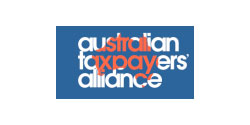‘Pink Tax’ Accusations Are Like Bikinis: Short On Substance
Some readers aren’t going to like this, but the so-called pink tax reflects economics not gender bias.
Sorry, but sometimes the truth is hard.
The idea of a pink tax is that products aimed at women are priced higher than similar ones aimed at men. The reaction by some has been a series of screeds attacking corporate America as the home of a bunch of evil misogynists.
Their arguments are often like skimpy clothing: Short on substance.
While there may be women-haters in the halls of big business, the evidence regarding the pink tax just isn’t there. In fact, if anything, economics explains any price differences far more easily than bias.
Same economic principles, different circumstances
Men and women buy things in different ways and that changes how retailers price things. The examples often used are with razors or deodorant, but I think clothing retailers provide another useful example.
It’s fair to say that few clothiers ever get rich catering solely to men. The big money to be made is in catering to women’s fashion, and in general women demand more choice. Most men on the other hand will buy the same product year after year after year. That’s true for me and many of my male friends. I learned a lot about these differences a few years ago when talking with Angela Ahrendts, who was then the CEO of luxury fashion house Burberry.
Successful retailers respond with more items for women to choose from.
The result of these gender differences in shopping habits is that the floor space devoted to apparel aimed at women far outstrips that aimed at men. Here are some key points:
- Retail floor space costs a lot, especially in high traffic areas.
- Who pays for the extra floorspace dedicated to the women’s apparel? Ultimately the customers do. Because the business has to make a profit over and above the costs of operating.
- Retailers who carry more women’s clothes in inventory will require more working capital.
- Who pays for the extra working capital? Ultimately, the customers do.
- Then there is also more inventory management needed for those extra products. People need to be paid to do that job.
- Who pays for the extra costs? Ultimately, the customers.
You get the idea.
It’s not just women’s apparel. I’m always shocked that wide-fitting mens shoes cost a lot more than do those with a medium fit. The fact is that fewer wide shoes are sold, so to make enough money to carry them retailers need to charge more. In the end, I’d rather pay more for shoes that fit.
At the other end of the scale, take Henry Ford. He is famous for saying his cars were available in any color as long as it was black. That wasn’t aimed at restricting choice so much as in keeping costs down. More choices cost more, even if it’s just the paint color. So he went with one color and kept the price low.
That’s all it is — simple economics.
http://www.forbes.com/sites/simonconstable/2016/07/07/pink-tax-accusations-are-short-on-substance/2/#719224e632eb















































